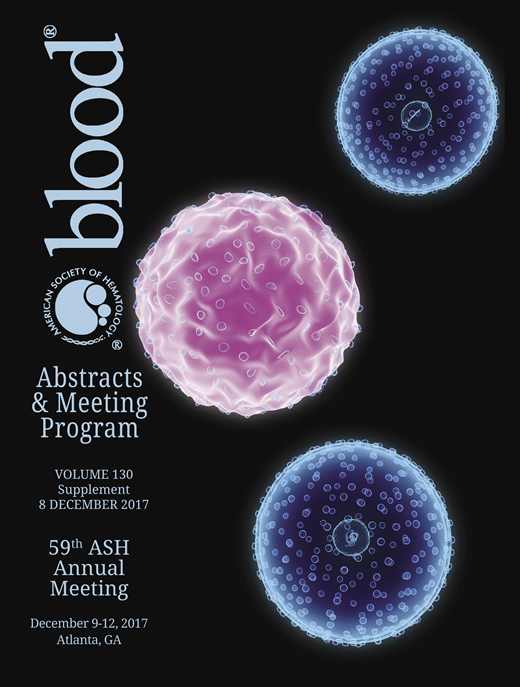Abstract
Disorders of fibrinogen (Fg) are usually the result of genetic mutations that hesitate in reduced levels of protein (hypofibrinogenemia) or in an abnormal molecule (dysfibrinogenemia). However, plasma factors or microenvironment can determine an acquired defect: reduced concentration or altered function. For example, antibodies may bind fibrinogen and/or fibrin by interfering with the polymerization and inhibiting the coagulation.
Our goal is to identify the cause of dysfibrinogenemia in a man of 65 years, diagnosed because of a discrepancy between values of immunological Fg and values of coagulative Fg; despite a reduced concentration of functional fibrinogen and an elongation of the thrombin time (TT), activated partial thromboplastin time (aPTT) and of the prothrombin time (PT) we could not put the diagnosis of hereditary deficit, because of normal values of coagulation tests performed by the patient about 12 months before.
The identification of a band on plasma immunofixation (western blot), referable to the light chain k, near to the band of fibrinogen, led us to investigate for a possible plasmacellular dyscrasia. Bone marrow plasma cells percentage was within normal range (4-5%). However the cytofluorimetric assay showed a k monoclonality in 80% of the patient's bone marrow plasma cells.
FLC-MGUS (monoclonal gammopatia of uncertain significance with the presence of monoclonal protein consisting of only light chain) diagnosis was made.
Treatment with dexametasone resulted in an almost complete correction of hemocoagulation parameters (with the only exception of TT elongation).
Despite serious altered coagulation tests, patient have never had haemorrhagic manifestations and/or thrombotic diseases.
This case is particularly unusual because the inhibitory effect on fibrinogen molecules was induced by a single light chain rather than by a complete antibody molecule. MGUS diagnosis was made on plasma immunofixation: no clonality was identified on serum immunofixation maybe because k chains were binded to fibrinogen molecules, absent in serum assay. In agreement with this hypothesis, after steroid treatment, FLC k (free light chain) values rose as if k light chains were released from fibrinogen molecules.
No coagulation tests correction was observed after PNP (pooled normal plasma) addition, (1:1 ratio) or after addition of Fg (obtained from PNP) to patient's plasma: patient's k light chain could inhibit Fg in normal plasma pool as well. Purified Fg from patient plasma was added to purified Fg from PNP: by increasing the patient's Fg share in relation to normal Fg share, we observed an initial decline in functional Fg value until 5:1 ratio was reached. No further functional Fg decline was observed increasing Fg share in dilution: functional fg reached a plateau as if saturation of the interfering capacity of light chains was achieved .
There were no differences between coagulation test at 4°C or at 37°C so we could rule out an interaction between k light chain and glucose part of fibrinogen molecule. No alterations in platelet aggregation test were observed, so an interaction in the fibrinogen's binding site for platelets IIb/IIIa glycoprotein, was excluded. As no hemorrhagic events were reported by the patient, an interaction in the fibrinogen's binding site for fXIII (coagulation factor XIII) or a FpA (fibrinopeptide A) impaired release were unlikely. However reptilase time test wasn't available at our laboratoty to assess FpA release.
It is known that pathological immunoglobulins (Ig) multiple myeloma (MM) patients interfere with coagulation test, so we screened 20 MM patients control group for dysfibrinogenemia, like patient's one. In 4 MM patients we found TT elongation but normal functional Fg values. In plasma immunofixation light chain bands didn't run at the same level of fibrinogen molecules.
We could rule out an interference between Fg and monoclonal light chain in MM patients: we speculated that pathological Ig interefered with fibrin polimerization. However only a comparison between functional and immunological fibrinogen tests should surely exclude dysfibrinogenemia in these patients, despite normal functional fibrinogen values.
A specific test to assay interaction between monoclonal light chain (obtained from patient's plasma) and Fg from PNP will be necessary to surely prove dysfibrinogenemia related to monoclonal FLCs.
No relevant conflicts of interest to declare.
Author notes
Asterisk with author names denotes non-ASH members.

